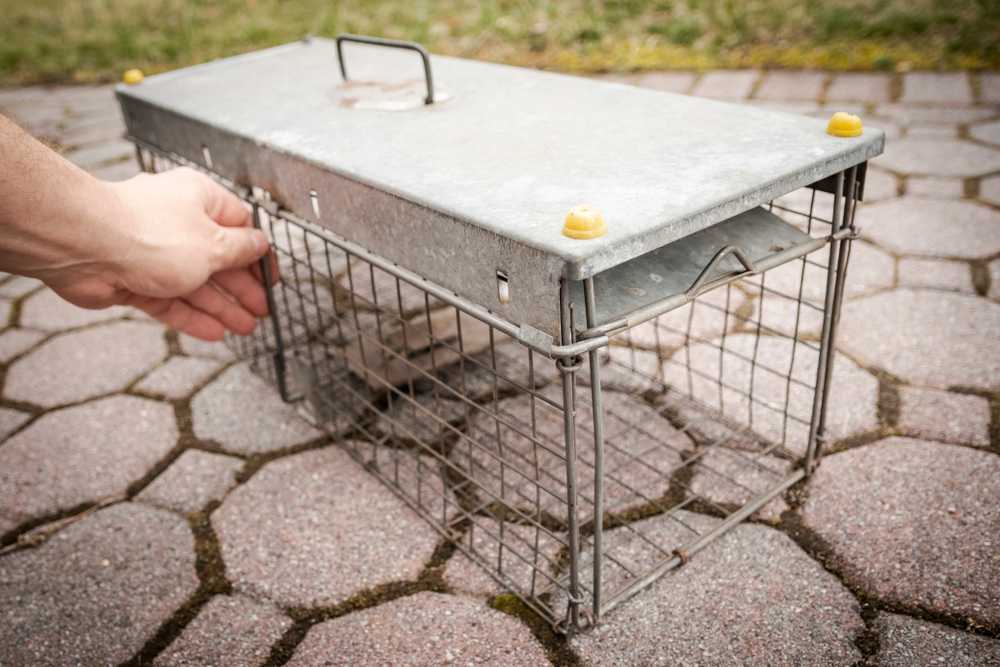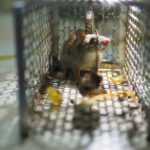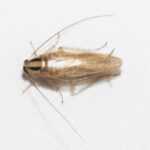How to Set a Mouse Trap for Quick and Effective Results
Need to set a mouse trap? This guide covers how to set a mouse trap and it all. Learn how to choose the right trap, where to place it, and tips for success to rid your house of unwanted critters.
- Choose the right mouse trap type: snap traps are effective and quick, glue traps are non-toxic but less humane, and live traps are a compassionate and humane way to catch and release mice.
- Properly set up the trap by placing it in high-traffic areas where mice tend to travel, using effective bait like peanut butter or sunflower seeds, and minimizing human scent to attract mice.
- Regularly monitor and maintain traps by checking them daily, re-baiting if needed, and considering professional pest control solutions if the problem persists.
Choosing the Right Mouse Trap
Choosing the right mousetrap is crucial when tackling a mouse problem. With numerous options, deciding the best one can be challenging. The three most common types are snap traps, glue traps, and live traps, each offering distinct advantages and disadvantages. Understanding these differences aids in making an informed decision.
Snap traps are the most recognizable and widely used mouse trap, utilizing a spring-loaded mechanism to kill mice instantly, making them both quick and effective. The best mouse trap is often considered to be the snap trap due to its efficiency and ability to kill a mouse quickly once triggered.
Glue traps, on the other hand, capture mice using a sticky surface. While they are non-toxic and easy to use, they can be less humane because the mouse suffers before it dies or is disposed of.
Live traps offer a humane way to capture mice without harm for release far from home. This method prevents unnecessary suffering and is considered more compassionate.
Knowing the unique features and proper setup of each trap type boosts your chances of success. Here’s an overview of each type.
Snap Traps
Snap traps are favored for their effectiveness and simplicity. Triggered by a spring-loaded mechanism when a mouse accesses the baited end, these traps kill instantly, offering a quick and humane solution to a mouse problem.
Snap traps are cost-effective, being both inexpensive and reusable, allowing multiple catches with the same trap. This makes them economical for long-term use. Additionally, they are designed to avoid direct contact with the mouse, a significant advantage for those squeamish about handling dead rodents.
For households with children and pets, child and pet-resistant models enhance safety while effectively reducing rodent populations. Overall, snap traps are reliable and efficient for managing mice.
Glue Traps
Glue traps use a sticky surface to capture mice and offer a non-toxic solution, making them safe for households with pets and children.
However, careful placement is needed to avoid capturing pets or children. While effective, glue traps are often seen as less humane since trapped mice can suffer before being discovered and disposed of.
Despite this, glue traps remain a viable alternative in certain settings.
Live Traps
Live traps offer a humane way to catch mice, capturing them without harm for release far from your house. Releasing the animal at least a mile away reduces the chances of it returning. This relocation ensures the mouse can survive without becoming a problem again. Live traps are ideal for those seeking a humane solution to a mouse infestation.
Overall, live traps offer a compassionate alternative to traditional trapping methods, making them a popular choice for many homeowners.
Preparing Your Mouse Trap
After selecting the right mouse trap, proper preparation ensures maximum effectiveness. Understanding common trap styles and their use increases chances of success. Place traps in areas where mice are typically found, such as attics, basements, and closets.
Different traps require unique setting methods, so following specific instructions for your chosen trap is crucial. For instance, traditional snap traps should be placed perpendicular to walls, while press-and-set traps should align with walls where mice tend to travel.
Proper preparation of your mouse trap significantly enhances its effectiveness in catching mice.
Selecting the Best Bait
Choosing the right bait is crucial for attracting mice, as mice love peanut butter, sunflower seeds, and soft candies, increasing your chances of success. Aromatic and sticky baits like peanut butter are highly effective. Other options include chocolate candy, hazelnut spread, and bacon, as mice are drawn to high-fat, high-calorie food sources.
Using small amounts of bait, such as a pea-sized portion of peanut butter, ensures it remains fresh and attractive. Regularly checking the bait, especially early on, helps maintain its effectiveness.
Selecting and using the right bait correctly is key to successful mouse trapping.
Minimizing Human Scent
Minimizing human scent is crucial for effective mouse trapping. Mice have a keen sense of smell, and human scent on traps can deter them. Wearing gloves while setting up and handling traps helps avoid transferring scent, increasing the chances of attracting mice.
Wearing gloves also prevents health risks when handling trapped rodents or cleaning used traps.
Setting Up the Mouse Trap
Correct setup of your mouse trap ensures its effectiveness. Proper preparation significantly enhances its ability to catch mice. Whether using a snap trap, glue trap, or live trap, following the correct procedures increases your chances of success.
For snap traps or press-and-set traps, place bait directly into the baited end or baitwell and secure the spring bar with the wire latch or staple holding the trap in the set position. Look for signs of mouse activity, such as droppings or oily streaks along walls, to determine the best trap locations. Proper setup is key to effective trapping.
Adding Bait to the Trap
Adding bait to the trap is crucial for attracting mice. High-protein, oily baits like peanut butter are particularly effective. A peanut-sized portion of fresh bait helps lure mice to the trap, increasing the likelihood of capture.
Positioning the Trap
Positioning the trap correctly is essential for success. Focus on high-traffic areas where mice are likely to travel. For snap traps, position them with the teeth facing the wall to maximize catch chances.
Using gloves while handling traps and baits prevents the transfer of human scent, which can hinder trapping success. Mice have a keen sense of smell, so handling traps with gloves is vital to avoid deterring them.
Proper positioning and handling are key factors in successful mouse trapping.
Activating the Trap
Correctly activating the trap ensures it’s ready to catch mice. It must be firmly set mouse trap and ready to trigger when a mouse approaches.
If traps remain untriggered for three days, relocate them to areas with more mouse activity.
Monitoring and Maintenance
Regularly monitoring and maintaining mouse traps ensures their effectiveness. Daily checks are essential, especially for live traps, to promptly deal with captured rodents. Inspect traps daily and reset as needed.
If no mice are caught after three days, re-bait, reset, and move the traps to areas with higher mouse activity to catch many mice. Proper monitoring and maintenance effectively manage your mouse problem.
Daily trap inspections are crucial for promptly addressing captured mice and resetting traps. If no mice are caught after three days, re-bait, reset, and move the traps to increase capture chances.
Disposing of Caught Mice
Wear gloves when disposing of caught mice to prevent disease transmission. Use a gloved hand and a plastic bag to seal and dispose of the dead mouse, ensuring hygiene and safety.
After trapping, clean the trap thoroughly to remove residual smells that could deter future catches. Disinfect traps to eliminate scent traces, enhancing their efficiency for reuse.
Professional Pest Control Solutions
Sometimes, a mouse problem can be too overwhelming to handle alone. In such cases, professional pest control solutions are invaluable.
Professionals offer various services, using different types of mouse traps, including snap, glue, live, electric traps, and bait stations. They strategically place traps and use exclusion techniques to prevent future infestations, ensuring a rodent-free house.
Effective rodent control relies on placing traps in areas with high rodent activity. This approach, combined with exclusion measures, deters future rodent issues and ensures a comprehensive solution.
Long-Term Control
For long-term rodent control, ongoing pest control services are essential.
Successfully dealing with a mouse problem requires choosing the right mouse trap, preparing it correctly, and maintaining it diligently. Snap traps, glue traps, and live traps each have their own unique advantages and setups, making it important to select the best mouse trap for your specific situation. Proper bait selection, minimizing human scent, and correctly positioning and activating the traps are crucial steps towards effective mouse trapping.
If your mouse problem persists despite your best efforts, professional pest control services can provide a comprehensive and long-term solution. With their thorough inspections, strategic trap placement, and ongoing services, professionals can ensures your house remains rodent-free. Take action today and reclaim your house from unwanted rodents.
Frequently Asked Questions
What is the most effective type of mouse trap?
Snap traps are generally regarded as the most effective mouse traps because they’re quick and affordable. They get the job done without breaking the bank!
What bait works best for mouse traps?
Peanut butter works best for mouse traps because its protein and oily content are super enticing to mice. Give it a try, and you’ll see great results!
How can I minimize human scent on mouse traps?
To keep mouse traps appealing, just wear gloves when you set them up to avoid putting your scent behind. It’s a simple trick that can really make a difference!
What should I do if my traps aren’t catching any mice?
If your traps aren’t catching any mice, try re-baiting them and moving them to spots where you notice more mouse activity. That should help boost your chances!
When should I consider professional pest control services?
You should consider professional pest control when your mouse problem won’t budge, even with traps. When that happens, calling in experts like Gopher Patrol can save you the hassle and ensure your house stays rodent-free.





